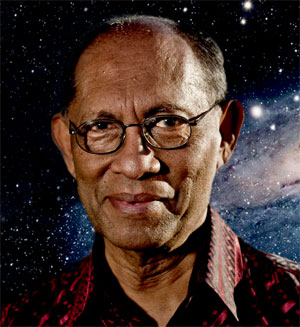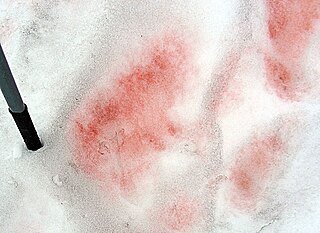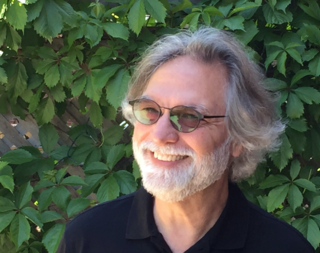
Astrobiology is a scientific field within the life and environmental sciences that studies the origins, early evolution, distribution, and future of life in the universe by investigating its deterministic conditions and contingent events. As a discipline, astrobiology is founded on the premise that life may exist beyond Earth.

Life is a quality that distinguishes matter that has biological processes, such as signaling and self-sustaining processes, from matter that does not, and is defined descriptively by the capacity for homeostasis, organisation, metabolism, growth, adaptation, response to stimuli, and reproduction. Many philosophical definitions of living systems have been proposed, such as self-organizing systems. Viruses in particular make definition difficult as they replicate only in host cells. Life exists all over the earth in air, water, and soil, with many ecosystems forming the biosphere. Some of these are harsh environments occupied only by extremophiles.

Astronomy is a natural science that studies celestial objects and phenomena. It uses mathematics, physics, and chemistry in order to explain their origin and evolution. Objects of interest include planets, moons, stars, nebulae, galaxies, meteoroid, asteroid, and comets. Relevant phenomena include supernova explosions, gamma ray bursts, quasars, blazars, pulsars, and cosmic microwave background radiation. More generally, astronomy studies everything that originates beyond Earth's atmosphere. Cosmology is a branch of astronomy that studies the universe as a whole.
Christopher Isham, usually cited as Chris J. Isham, is a theoretical physicist at Imperial College London.

Nalin Chandra Wickramasinghe is a Sri Lankan-born British mathematician, astronomer and astrobiologist of Sinhalese ethnicity. His research interests include the interstellar medium, infrared astronomy, light scattering theory, applications of solid-state physics to astronomy, the early Solar System, comets, astrochemistry, the origin of life and astrobiology. A student and collaborator of Fred Hoyle, the pair worked jointly for over 40 years as influential proponents of panspermia. In 1974 they proposed the hypothesis that some dust in interstellar space was largely organic, later proven to be correct.

Snow algae are a group of freshwater micro-algae which grow in the alpine and polar regions of the earth. These algae have been observed to come in a variety of colors associated with both the individual species, stage of life or topography/geography. A typical snow algae in the alps and polar regions is Chlamydomonas nivalis. This variation is associated with both albedo differences of the snowy habitat and the presence of micro-invertebrates. Snow algae play a critical role in the trophic organization as primary producers who in turn are consumed primarily by tardigrades and rotifers. Snow algae have also been found to travel great distances being carried by winds.
Edgar Zilsel was an Austrian-American historian and philosopher of science.
John Scales Avery is a theoretical chemist noted for his research publications in quantum chemistry, thermodynamics, evolution, and history of science. Since the early 1990s, Avery has been an active world peace activist. During these years, he was part of a group associated with the Pugwash Conferences on Science and World Affairs. In 1995, this group received the Nobel Peace Prize for their efforts. Presently, he is an Associate Professor in quantum chemistry at the University of Copenhagen. His 2003 book Information Theory and Evolution set forth the view that the phenomenon of life, including its origin and evolution, that including human cultural evolution, has it background situated over thermodynamics, statistical mechanics, and information theory.

Whether there is life on Titan, the largest moon of Saturn, is currently an open question and a topic of scientific assessment and research. Titan is far colder than Earth, but of all the places in the Solar System, Titan is the only place besides Earth known to have liquids in the form of rivers, lakes, and seas on its surface. Its thick atmosphere is chemically active and rich in carbon compounds. On the surface there are small and large bodies of both liquid methane and ethane, and it is likely that there is a layer of liquid water under its ice shell. Some scientists speculate that these liquid mixes may provide prebiotic chemistry for living cells different from those on Earth.

Jan Anthony Sapp is a professor in the Department of Biology, York University, Canada. His writings focus especially on evolutionary biology beyond the classical neo-Darwinian framework, and emphasize the fundamental importance of symbiosis and horizontal gene transfer in heredity and evolution.
A sulphobe is a film composed of formaldehyde and thiocyanates alleged to have lifelike properties. The name is a portmanteau of sulphur microbe. Sulphobes were a subject in the researches of Alfonso L. Herrera, a biologist who studied the origin of life.

Apophlaea is a genus of thalloid algae that is endemic to New Zealand. This genus has two species, both from the high intertidal zone on New Zealand's coasts. Specimens can reach around 15 cm in size. The thalli take a crustose form, but also contain upright, branching frond-like protrusions that reach 5–8 cm in height. Secondary pit connections and secondary pit connectionsare present in the organisms. Apophlaea reproduces by means of conceptacles; it produces tetraspores.
Wolff-Michael Roth is a learning scientist at the University of Victoria conducting research on how people across the life span know and learn mathematics and science. He has contributed to numerous fields of research: learning science in learning communities, coteaching, authentic school science education, cultural-historical activity theory, social studies of science, gesture studies, qualitative research methods, embodied cognition, situated cognition, and the role of language in learning science and mathematics.
Prochloron is a genus of unicellular oxygenic photosynthetic prokaryotes commonly found as an extracellular symbiont on coral reefs, particularly in didemnid ascidians. Part of the phylum cyanobacteria, it was theorized that Prochloron is a predecessor of the photosynthetic components, chloroplasts, found in photosynthetic eukaryotic cells. However this theory is largely refuted by phylogenetic studies which indicate Prochloron is not on the same line of descent that lead to chloroplast-containing algae and land plants.
James William Schopf is an American paleobiologist and professor of earth sciences at the University of California Los Angeles. He is also Director of the Center for the Study of Evolution and the Origin of Life, and a member of the Department of Earth and Space Sciences, the Institute of Geophysics and Planetary Physics, and the Molecular Biology Institute at UCLA. He is most well known for his study of Precambrian prokaryotic life in Australia's Apex chert. Schopf has published extensively in the peer reviewed literature about the origins of life on Earth. He is the first to discover Precambrian microfossils in stromatolitic sediments of Australia (1965), South Africa (1966), Russia (1977), India (1978), and China (1984). He served as NASA's principal investigator of lunar samples during 1969–1974.
Natrinema versiforme is an extremely halophilic archaeon. It is neutrophilic, non-motile and pleomorphic, with type strain XF10T.
Halococcus dombrowskii is an archaeon first isolated from a Permian alpine salt deposit. It is an extremely halophilic coccoid with type strain H4T.
Jiri Jonas is a professor emeritus of chemistry in the Center for Advanced Study at the University of Illinois at Urbana-Champaign. Jiri Jonas is considered a pioneer in the use of magnetic resonance imaging at high pressure, developing techniques to study the dynamic structure of liquids and proteins. This approach has been used in the study of the arc repressor, a DNA-binding protein containing 53 amino acid residues.

Betül Kacar is a Turkish-American astrobiologist and an Assistant Professor at the University of Wisconsin. She directs a NASA Astrobiology Research Center exploring the essential attributes of life, its origins and how they should shape our notions of habitability and the search for life on other worlds.

Peter Louis Antonelli was an American mathematician known for his work on mathematical biology, Finsler geometry, and their connections.










